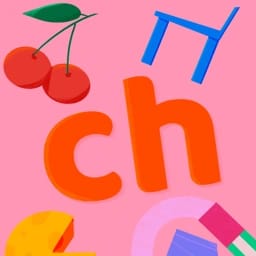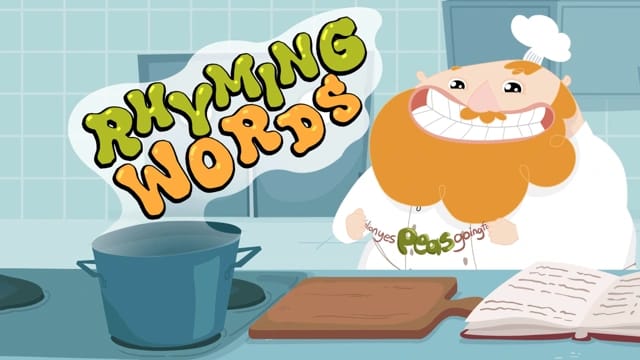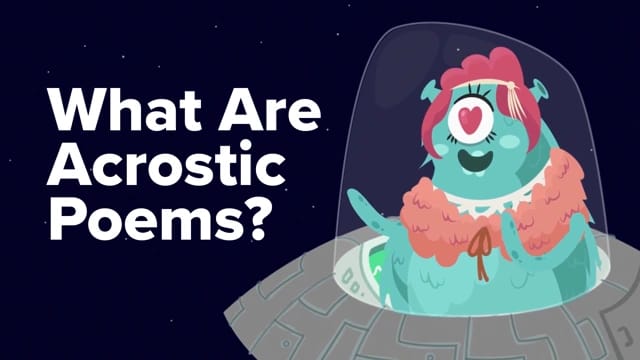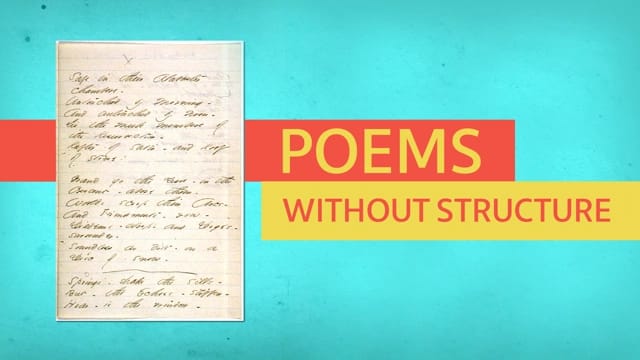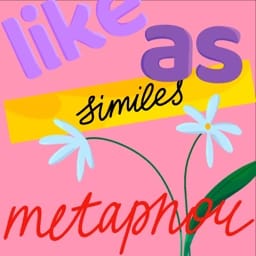7 Poetry activities for kids
In this guide
Poetry is a powerful form of literacy that boosts students’ imagination, literacy skills, and creativity. Many students find poetry freeing as it tends to allow for more freedom with language, structure, and rhythm. Through various poetry activities, kids can learn more about language, develop their vocabulary, and become better writers. Introducing students to poetry early on can foster a love of reading and writing!
When teachers take the time to engage students in poetry activities, it allows for the freedom of expression and emotions that lends itself to seeing the world from a different point of view. In my own classroom, I have seen students who aren’t typically interested in sharing emotions, writing, or school in general, really find an interest in poetry. Poetry breaks the rules in a way that keeps students engaged.
There are so many ways to make poetry accessible and enjoyable for kids of all ages in the classroom. The following activities will give teachers a starting point to explore different poetry activities in the classroom that are perfect for kids of all ages. Poetry is a great place to introduce writing concepts, language, or emotional expression.
1) Rhyming games
In order to introduce younger students to poetry concepts, a fun way to get started is to practise rhyming skills. This also develops students’ phonological awareness, which is an essential skill for early reading and writing. This could be a simple game where the teacher starts with a word and students come up with words that rhyme. Students can either orally state these words or write them.
It may be helpful to start with some instruction on rhyming words and what rhyming words sound like. Videos like What are Rhyming Words can be helpful in giving students a brief overview of rhyming concepts before playing a game.
Another simple rhyming activity is creating lists of rhyming words and turning it into a competition. Students can work in a group or pair to write down either as many words that rhyme with one single word, or come up with rhyming pairs. These rhyming pairs can be turned into a class book to allow students an opportunity to both write poetry and read poetry.
Books that incorporate rhyming pairs, words, and structure can be a helpful mentor text for students beginning to write their own rhyming words or poetry. Rhyming Dust Bunnies by Jan Thomas is a perfect example of rhyming words used in patterns or pairs. Following this same structure, students can create their own rhyming books!
2) Acrostic poems
Acrostic poems provide a fun and engaging access point for students to practise writing poetry. These poems are simple and structured, yet offer an easy way for students to show off their creativity. In an acrostic poem, a word or phrase is chosen and written vertically. Each line starts with the letter of the vertical word.
Acrostic poems are fun ways to write about different themes being explored or studied in the classroom. Words like ‘OCEAN’ or ‘PLANT’ can create fun activities to explore poetry in a science lesson. Students can use acrostic poems to talk or share about themselves or their families. Words like ‘FAMILY’ or a student’s first or last name will also engage students in trying this form of poetry for the first time.
Acrostic poems provide a structure that makes it easy for kids to get started with their writing of poetry. It encourages students to think critically about their word choices and aides in the exploration of new vocabulary. By writing acrostic poems, kids can learn to express their thoughts and emotions and gain confidence in their writing abilities.
A video like What are Acrostic Poems? can be a helpful resource to teachers just introducing the concept of an acrostic poem to their students. Acrostic poems are a perfect activity to do as a class or with a partner pair. Students can co-create acrostic poems, each choosing a different letter to match with a word.
3) Found poetry
For older students, found poetry can be used to spark new ideas from already existing texts. Found poetry involves taking words, phrases, passages, or sentences from books, magazines, or newspaper articles and turning them into new poetry. This activity can help kids see that poetry can be found anywhere!

There are many ways to use found poetry in the classroom. For upper primary and lower secondary students, I have used old texts and novels to give students the opportunity to create blackout poetry. Using dark markers, students ‘blackout’ all the words on the page but a few to create a new poem. These poems can be thematic, or just what stands out as a student looks at the page.
Another way students can use found poetry in the classroom is to start with magazines, newspaper clippings, or other varieties of texts. Students should look for interesting words or phrases and cut out these individual words. After collecting the words or phrases, students can arrange these words on a new page to form a poem.
Found poetry is another fun activity to get students excited about exploring language in a new way. This is unstructured poetry that may lend itself to a discussion about free-verse poetry and the lack of true structure or rules in this type.
4) Haiku
A haiku is a traditional form of Japanese poetry that consists of three lines with a very structured syllable pattern of 5-7-5. Writing haiku poetry can help students focus on selecting specific words carefully and counting syllables.
According to JEI Learning Center, “The set rules of structure for haikus enable children to improve their language skills and gain confidence in expression. Children face the challenge of fitting what they want to say within the 5-7-5 syllable format. This experimentation with syllables should inspire children to look up new words or synonyms and stretch their creative minds” (JEL Learning Center). Haiku poetry can be a great introduction to topics like synonyms or syllables for younger students.
Most haiku poetry involves nature and the observation of nature. Take students on a nature walk and give them time to take notes on what they see, hear, feel, and touch. Kids can then use these sensory words to inspire their haiku.
Most haikus focus on smaller details of larger elements in nature such as the small sounds of a storm, the feeling of an ocean wave, or the small grains of sand. Encourage students to think deeply and creatively while writing their haiku poetry.
A haiku is a type of poetry called short form poetry. Giving students some background knowledge and information about this style of poetry might be helpful before trying to write their own.
5) Shape poetry

To add a little more creativity to poetry, some students will enjoy creating shape poems, or concrete poems. These are poems where the words are arranged to create a picture or visual that goes along with the topic or theme of the poem.
Books like Wet Cement by Bob Raczka give students a model of what shape or concrete poems might look like. This type of poetry uniquely combines art and writing making it appealing for more creative students.
To begin, students can either choose a topic such as a tree, flower, or school bus and then start writing their poem. Or, students can choose a shape such as a heart or star and write their poem inside the shape. For older students, it might be helpful to write their poem first and then create the shape or visual picture that goes along with the poem.
If a student chooses to write a shape poem about a flower, they could draw an outline of a flower and fill it with words or phrases associated with flowers. The visual aspect of the shape poetry allows the opportunity for kids to think more deeply about the topic or subject they selected and carefully consider how the layout of the words influences the meaning of the poem.
Many teachers enjoy creating shape poems with their students to represent certain holidays. Heart-shaped poems on Valentine’s Day or snowflake-shaped poems in the winter are great ways to practise shape poetry as a class!
6) Book spine poetry

Book Spine Poetry uses real novels, picture books, or published texts to create simple and effective poetry. Geared towards older students, this type of poetry is a fun way to create poems but also add newer books to a student’s ‘to-read’ list.
Start by gathering several books or visiting the school or local library where students will have endless access to books. Teach students how to scan the spines of books, looking at the titles that the spines display. Some book spines look different than others, so it is important to model what makes a good book spine for book spine poetry.
As students read titles and spines of books, they can begin to gather words or phrases that sound interesting or fit the topic or theme of the poem they are writing about. After selecting between 5-10 books, students layer the books so the spines create a poem. These poems are more free verse poems, so they don’t often rhyme or have a specific structure, however, they can create very powerful and meaningful short poems.
Book spine poetry is best displayed by taking a picture of the book spines layered together. This activity is a perfect beginning or end of the year project as students are previewing books to read or reflecting on the books they’ve read throughout the year.
7) Poetry performances
Poetry performances such as slam poetry, spoken word, or recitation of poetry is a great way to challenge students in their speaking skills as they learn about poetry. Slam poetry usually involves creating a poem based on a certain topic and performing it in a way that captivates the audience.
According to edutopia.com, “slam poetry, a blend of literature and performance that culminates in live competitions called slams, is transforming these students from reluctant, shy, or diffident learners into passionate artists. It is helping teachers not just teach writing but also build confidence.”
Ralph Fletcher reflects on attending a poetry slam event at a school in Queens, New York. He writes, “Participating in this Poetry Slam was a powerful experience that led me to revise my thinking. I usually encourage smaller, more intimate share sessions that take place within a classroom. But my experience in Queens reminded that there is definitely a place for big, splashy event that celebrates many writers at one time” (Fletcher).
Giving students the freedom to express themselves and perform through poetry offers a new perspective to poetry learning and exploration. Oftentimes, slam poetry can be intense and emotional. Students may choose to write about real-world topics that are important to them or topics that relate to the lessons they are studying.
In order to prepare students for poetry performances, it is beneficial to review what a good spoken word or slam poem looks like. Videos like Three Seconds and Anonymous by Luka Lesson can be used as a mentor or guide for students to create their own slam poetry.
For additional poetry ideas, checkout the following topics from ClickView:
References
- JEI Learning Center. (2023). How Writing Haikus Can Benefit Your Child. [online] Available at: https://us.jei.com/resource-center/how-writing-haikus-can-benefit-your-child/ [Accessed 26 Jun. 2024]
- Edutopia. (2009). Kids Feel the Power of Poetry in Performance. [online] Available at: https://www.edutopia.org/poetry-slam-global-writes [Accessed 26 Jun. 2024]

Victoria Dotson
briefcase iconLiteracy Specialist
Victoria Dotson, an esteemed educator and professor in Chicago, Illinois, leverages her background as a Literacy Specialist to support multilingual learners and mentor preservice teachers. Victoria excels in developing literacy practices, promoting diverse literacy experiences in the classroom, and developing restorative curriculum.
Other posts
Want more content like this?
Subscribe for blog updates, monthly video releases, trending topics, and exclusive content delivered straight to your inbox.



